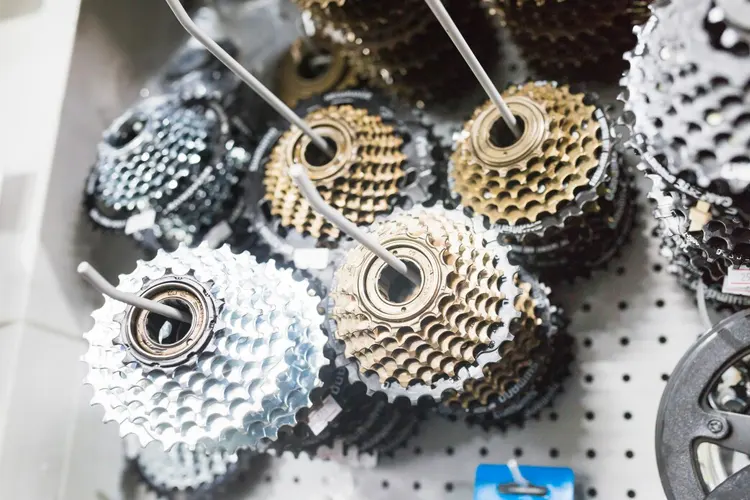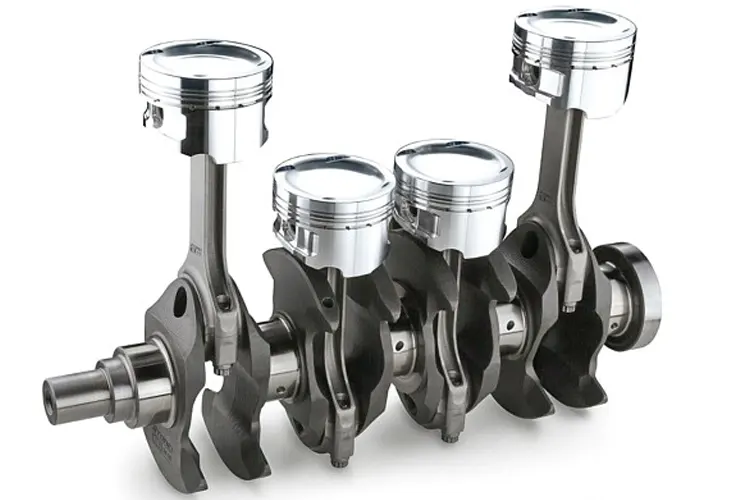Introduction
Massive engineering projects—imagine hugely tall wind turbines, massive rail networks, or new aerospace systems—depend on parts that are strong, accurate, and designed for durability. Castings for Engineering are the soul of these ventures, made by smelting metal and pouring it into molds to produce parts that comply with the highest industry standards. These components enable intricate designs and endure harsh environments, energizing industries such as energy, transport, and infrastructure. This in-depth article delves into how castings enable these projects, outlining their technical advantages, practical applications, and the innovations that make them crucial for major engineering projects.

The Power of Castings in Big Projects
Castings form the backbone of heavy engineering, transforming raw material into components that combine sophisticated design with earnest strength. By molding molten metal in bespoke molds, Castings for Engineering provides answers to projects that require the best out of heavy conditions. Their expertise in working with complex shapes, massive sizes, and every type of material makes them a benchmark for industries constructing the world's infrastructure.
Building Difficult Shapes
Heavy engineering frequently requires parts with shapes too intricate for common techniques such as machining or forging. Castings come to the rescue, allowing molten metal to pour into precision molds to pin down fine details without compromising strength. Turbine blades in power plants, for instance, require fine internal channels to deal with heat of more than 1000°C. Investment casting, a technique perfected by foundries such as Super Quali Cast (India) Pvt. Ltd., achieves tolerances as close as ISO CT3, ensuring these parts work in high-pressure applications.
Constructing Huge Components
Castings can produce parts of any scale, from minute fittings to giant structures weighing hundreds of tons. This is gigantic for heavy engineering. Sand casting, for example, produces single-piece parts such as machine bases for industrial presses or propeller hubs for large ships. A prime example is pump housings for hydroelectric dams, usually over 150 tons, illustrating how Castings for Engineering deals with the largest infrastructure issues.
Matching Materials to Tough Jobs
Castings can be done with any type of material, from heavy-duty ductile iron to light aluminum or titanium alloys, allowing parts to match project requirements. Gray iron, which is very good at absorbing vibrations, is the perfect material for the base of heavy machinery. Titanium castings, which have an amazing strength-to-weight ratio, are the main source of power in the aerospace industry. This wide range of materials enables Castings for Engineering not only to cope with corrosion but also with high temperatures, satisfying the different needs of each industry.
Accuracy Withstanding Stress
In heavy engineering, accuracy is paramount—small errors lead to big issues. Castings provide parts with precision down to the last detail and silky surfaces, minimizing additional work and guaranteeing they withstand harsh conditions.
Investment Casting for Exactness
Investment casting, alternatively referred to as lost-wax casting, is an excellent choice for producing parts with intricate details. A wax pattern is covered with a ceramic shell, then replaced with molten metal to produce such components as jet engine turbine blades that encounter harsh heat and stress. These blades, typically produced from nickel-based superalloys, reach surface finishes of up to Ra0.8 micrometers, shaving drag and increasing efficiency. This level of precision renders investment casting essential for mission-critical projects.
Die Casting for Large Production Orders
Whenever projects require tons of the same components, die casting is the solution. It forces molten metal into high-pressure steel molds, producing components such as car engine blocks consistently. Aluminum die-cast components, for instance, are found in motor vehicle chassis to maintain strength without excessive weight, reducing fuel consumption. Its capability to manufacture thousands of parts with precise tolerances makes die casting ideal for massive engineering.
Centrifugal Casting for Solid Round Parts
Centrifugal casting is perfectly suited for round items such as pipes or rings, which are very popular in heavy engineering. The spinning of the mold in casting causes the material to be distributed evenly, which results in improved strength and reduced defects. Steel pipes made by centrifugal casting for oil and gas pipelines are resistant to corrosion and high pressure, which means that they will ensure reliability in harsh environments. The capacity of this method to produce dense and good-quality parts is essential for critical systems.
Tough Components That Save Money
Heavy-duty engineering requires parts that can withstand punishment without incurring great costs. Castings for Engineering provide tough parts that reduce material waste and lower production costs.
Reducing Material Waste
Processes like investment casting create parts that are almost finished when they come out of the mold, reducing the need for extra machining. That’s a big deal when using expensive materials like titanium or high-grade steel. By cutting waste, castings save money and support green manufacturing, which matters in industries like energy and transportation.
Made to Last
Cast parts are designed to endure harsh environments. Steel castings for construction equipment, such as excavator arms, endure heavy loads and hard use. Ductile iron castings for rail equipment, such as wheel hubs, withstand fatigue for decades of service. These are some examples of how castings make projects dependable in the long term.
Cost-Effective at Scale
Casting may require upfront costs for molds, but it’s a winner for big production runs. Permanent mold casting, for example, uses reusable dies to make thousands of identical parts, reducing costs per unit. In projects like city water systems, cast valves and fittings are made in bulk without sacrificing quality, making castings a smart choice for budget-conscious engineering.
New Technology Staying Ahead of Castings
Casting continues to advance with technology that makes it more accurate, effective, and environmentally friendly. These technologies keep Castings for Engineering up to date with the latest heavy engineering solutions.

3D Printing for Rapid Molds
3D printing is one of the altered ways that are directly related to changing a casting mold. The process of using wax or resin allows foundries to manufacture complicated molds with high precision in a short time. It's a big deal for investment casting, where rapid prototyping of bespoke aerospace or energy components reduces lead times and unlocks new design possibilities.
Better Alloys for Better Parts
New alloys for casting are extending the boundaries. Turbine blades made from nickel-based superalloys can now operate at higher temperatures, which has led to power plants being more efficient. Aluminum and magnesium alloys that are lightweight are assisting area vehicles and airplanes in fuel saving. These material innovations continue to keep castings on track with industry demands for improved performance and reduced environmental impact.
Automation for Reliable Results
Automation is making castings more uniform by eliminating human error. Automated pouring equipment and constant monitoring keep temperature and mold positioning in check. In sand casting, machines such as the DISAMATIC D3 produce high-density molds with precision, ideal for auto parts. The equipment guarantees that castings are consistent enough for large production runs.
Where Castings Make a Difference
Castings for Engineering have a widespread application that appears in leading heavy engineering industries. Each relies on castings to achieve certain performance and regulation requirements, driving forward essential infrastructure.
Aerospace: Light and Tough
Aerospace requires parts that are light and precise. Castings provide components such as landing gear or engine housings, usually made of titanium or aluminum, through investment casting. The parts have intricate internal structures that reduce weight while remaining strong, enabling planes to consume less fuel and emit less energy.
Energy: Powering Big Systems
In energy, castings hold up parts that operate under harsh conditions. Massive steel castings comprise wind turbine nacelles and hubs, resisting powerful winds. In nuclear power plants, investment-cast valve bodies provide safety under high pressure and radiation. These applications demonstrate how castings are critical to energy infrastructure.
Transportation: Safe and Efficient
Transportation systems rely on castings for strength and performance. Automobile engine blocks and suspension components, frequently die-cast or sand-cast, provide the power and accuracy necessary for dependable operation. For rail systems, ductile iron castings such as steering knuckles endure fatigue, which makes trains stronger and more durable.
Construction and Mining: Built Tough
In mining and construction, castings endure rough environments. Steel castings in cranes and excavators are work that takes on heavy loads, while gray iron castings in machine bases are like shock absorbers that help the machine run steadily by soaking up vibrations. Castings' ability to create robust, large parts economically makes them a leading option in these industries.
Handling Casting Challenges
Castings introduce great advantages, but they introduce flaws or expenses that require special attention in order to offer quality and value. Passing these obstacles is the way to make Castings for Engineering functional for heavy engineering projects.
Addressing Flaws
Parts with flaws, such as porosity or shrinkage, may be less strong. Hot isostatic pressing (HIP) is a process that eliminates the inner voids in the investment cast parts. Thus, they become more efficient. NDT, such as ultrasonic testing, for example, guarantees that the components correspond to the highest quality standards before they are used in life support systems.
Maintaining Cost and Quality Balance
Casting tooling can be expensive initially, particularly for complicated parts. However, sand casting is affordable for small runs, and die casting is suitable for high-volume output. Selecting the appropriate approach depending on the project maintains cost and quality in line.
Reducing Environmental Impact
Multiple energy sources utilizing the casting process may contribute to it being energy-intensive, but energy-efficient furnaces and reusable molds are among the new tools that lead to a decrease in energy consumption. Besides that, the use of lightweight cast alloys saves energy in applications such as cars or planes; hence, the environmental footprint of the entire life cycle is reduced, contributing to sustainability targets.
The Big-Picture Impact of Castings
The true strength of Castings for Engineering lies in providing specially tailored, high-performance components. By facilitating intricate designs, accommodating all types of materials, and volumetric scaling affordably, castings enable heavy engineering projects to achieve mega goals.
Simplifying Design and Production
Castings not only reduce the need for multi-part assemblies; they also help in saving money and increasing reliability by eliminating the weak joints. A single cast pump housing, to illustrate, can serve as a waterproofed and fire-resistant metal, while a welded setup can be a fire hazard. Hence, it will be the one that is toughest and of better performance in industrial use.
Spurring New Concepts and Specialization
Casting's versatility allows engineers to prototype and tailor quickly. In aerospace, specialized cast parts address precise requirements, and 3D-printed patterns accelerate design adjustments, advancing projects more quickly.
Keeping Things Reliable for the Long Term
Cast parts are designed to endure, keeping projects strong over time. From wind turbine hubs that can handle years of wind to car engine blocks lasting millions of cycles, castings provide the strength critical systems require.
Wrapping It Up
Engineering Castings are the pillar of heavy engineering, producing parts that combine precision, strength, and economy. From complex aerospace parts to giant infrastructure components, castings enable large projects to be realized. With newer technology such as 3D printing and superior alloys, castings will continue to forge the future of engineering, providing solutions that are flexible and durable.
